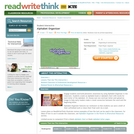
Students use this online tool to create an alphabet chart or pages for an alphabet book.
- Subject:
- Arts and Humanities
- Material Type:
- Activity/Lab
- Interactive
- Provider:
- ReadWriteThink
- Provider Set:
- ReadWriteThink
- Date Added:
- 08/19/2013

Students use this online tool to create an alphabet chart or pages for an alphabet book.
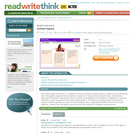
Supporting inquiry-based research projects, the Animal Inquiry interactive invites elementary students to explore animal facts and habitats using writing prompts to guide and record their findings.

Ever wonder how honey gets from the bee to the table? Join the Bee Cause Project and avid beekeeper, Ted Dennard, on this immersive 360 video to find out just how those amazing bees do it! The National Honey Board has created an amazing look into the life of beekeepers and into the hive. We've created a lesson plan full of resources including science lessons, video links, and a full set of step-by-step printable cards for demonstrating the process of how honey is made!

This lesson plan and assessment takes you on a journey to discover if pollinators find your campus a hospitable home. Core compliant for Grades 3-5, but adaptable to all ages. Are you working with distance learners or in a non-traditional teaching environment? This lesson plan is perfect for you! All you need is a pencil and outdoor space, including sidewalks, local parks, greenways, libraries, and beyond!
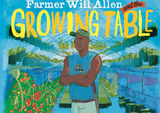
Growing up in Maryland, Will Allen hated farming! After a career in professional basketball and working in a “white shirt job,” Will turned his attention to helping a Milwaukee community learn to grow their own food when he rediscovered a passion for working in the dirt. This book will inspire children and teachers to look at every pot or plot of dirt as a place to grow something.Grade Level: 3rd-5thLexile Level: AD630LGuided Reading Level: TGenre: Nonfiction
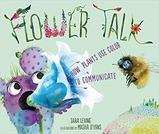
Want to know a secret? Flowers actually ‘talk’ to animals! This beautifully written and illustrated informational text is a delightful way to introduce the symbiotic relationship between plants and pollinators. Full of interesting facts and told from the perspective of a “prickly” cactus, this book will enlighten and entertain your audience.Grade Level: 2nd-5th Lexile Level: 570L Guided Reading Level: Q Genre: Informational Text
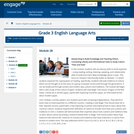
In this module, students will use literacy skills to build expertise—using reading, writing, listening, speaking, and collaborative skills to build and share deep knowledge about a topic. This focus on research intentionally builds on Module 1, in which students explored the superpowers of reading. Specifically, students will seek evidence of culture, which can be thought of as the story of a group of people constructed through the generations; it can be evidenced through ancient and modern-day customs and traditions. The module will begin with a class study of the culture of Japan: Students will read Magic Tree House: Dragon of the Red Dawn, a book set in ancient Japan, paired with Exploring Countries: Japan, an informational text about modern Japan.
Find the rest of the EngageNY ELA resources at https://archive.org/details/engageny-ela-archive .

In this eight-week module, students explore the questions: “Who is the wolf in fiction?” and “Who is the wolf in fact?” They begin by analyzing how the wolf is characterized in traditional stories, folktales, and fables. Then they research real wolves by reading informational text. Finally, for their performance task, students combine their knowledge of narratives with their research on wolves to write a realistic narrative about wolves.
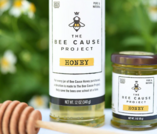
This Educators Guide provides everything you need to make this virtual field trip a huge success with your students! You will find lists of materials and resources, step-by-step instructions for three complete lessons, journal prompts as well as research topics, supplementary card work, and standards mapping.

Michael is feeling all alone in a new city and new school until Jesse, a fellow student introduced him to the school garden! Working with new friends, exploring tastes, harvesting vegetables, nicknaminginsects, and solving garden riddles are just a few of the ways that the school garden helps Michael feel like he is growing roots. This Found Poetry style picture book is perfect for introducing a uniquemodern style of poetry while incorporating history, cooking, word study, and a love for the outdoor classroom.Grade Level: 2nd-5thLexile Level: Not availableGuided Reading Level: Not availableGenre: Fiction, poetry
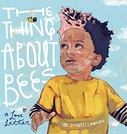
This unique book is a love letter written as a poem from the author, Shabazz Larkin, to his two sons. This artist, author, and activist is learning to overcome his fear of our most amazing pollinators --bees! With careful research and experiences with his sons, Larkin is learning to be fearless and wants to teach kids to be brave when facing their fears.Lexile Level: Not availableGuided Reading Level: Not availableGenre: FictionPre-Reading
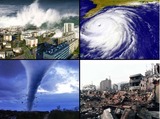
The Third Grade Elementary Framework for Science and Integrated Subjects, Weather, uses the phenomena of extreme weather events. It is part of Elementary Framework for Science and Integrated Subjects project, a statewide Clime Time collaboration among ESD 123, ESD 105, North Central ESD, and the Office of Superintendent of Public Instruction. Development of the resources is in response to a need for research- based science lessons for elementary teachers that are integrated with English language arts, mathematics and other subjects such as social studies. The template for Elementary Science and Integrated Subjects can serve as an organized, coherent and research-based roadmap for teachers in the development of their own NGSS aligned science lessons. Lessons can also be useful for classrooms that have no adopted curriculum as well as to serve as enhancements for current science curriculum. The EFSIS project brings together grade level teams of teachers to develop lessons or suites of lessons that are 1) pnenomena based, focused on grade level Performance Expectations, and 2) leverage ELA and Mathematics Washington State Learning Standards.

Students can generate descriptive timelines and even include images in the description.
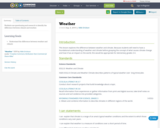
Students use questioning and research to identify the difference between climate and weather.
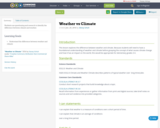
Students use questioning and research to identify the difference between climate and weather.
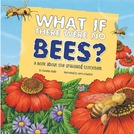
What if there were no bees? How would it affect our grassland animals? How would it affect humans? This book offers insight into the problems that countless animals and plants face with the potential loss of the bees. Discover just how important this tiny species is to the food web of this ecosystem.Grade Level: 3rd-5thLexile Level: 890LGuided Reading Level: NGenre: Nonfiction
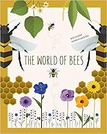
This book will take you on an amazing adventure with the bees! Section by section, learn all about the history of bees, the language of bees, and the science of bees. From honey products to honey eaters, this title will help students get excited about the world of bees!Grade Level: 2nd-6thLexile Level: Not availableGuided Reading Level: Not availableGenre: Nonfiction